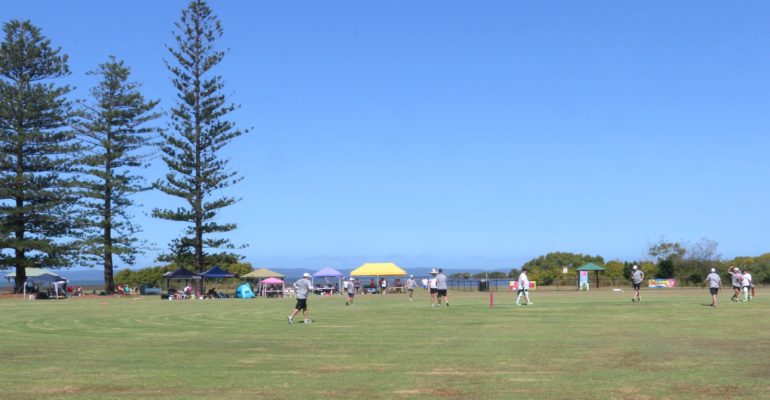
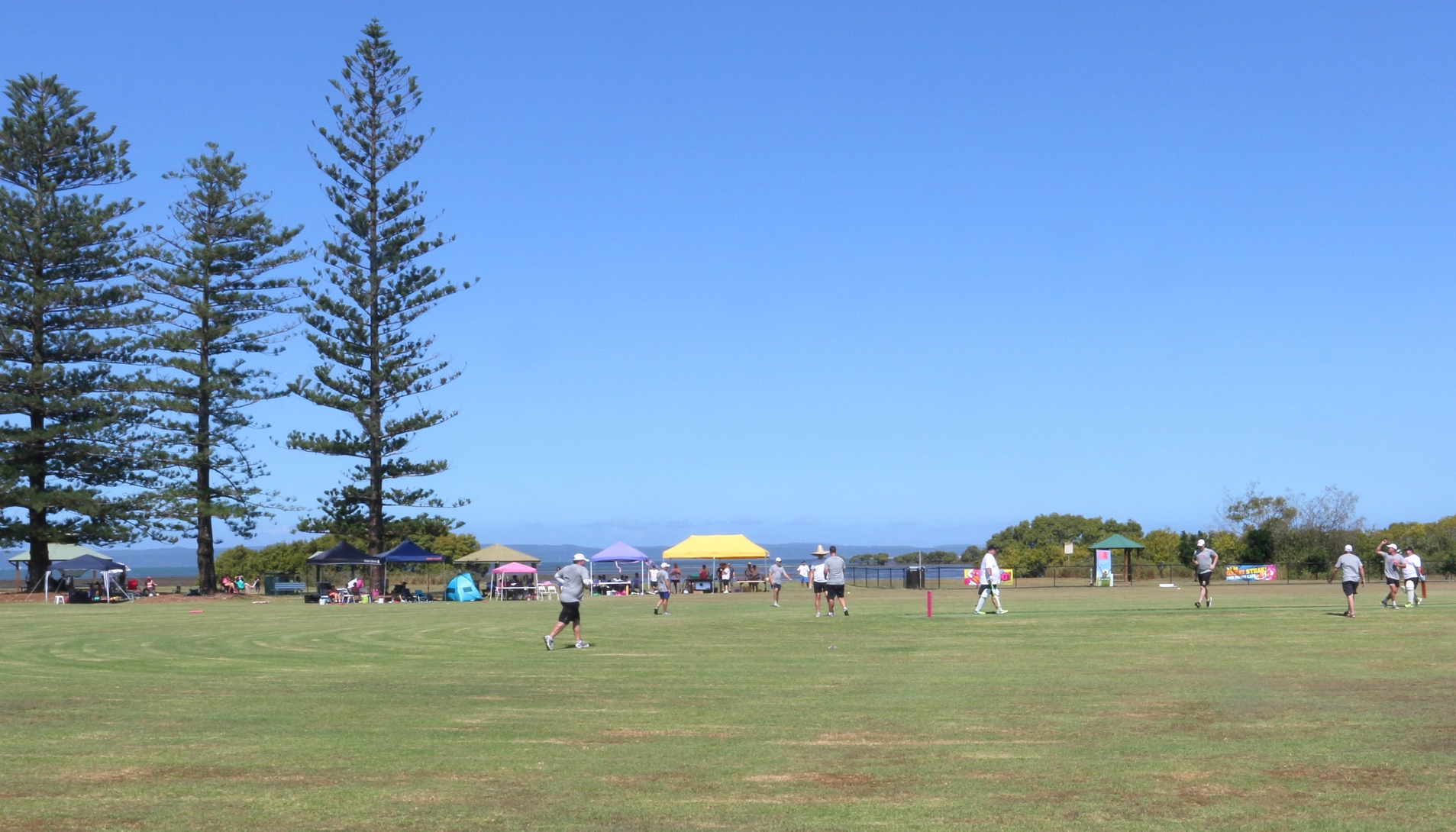
G.J. Walter Park supports a range of recreational activities
The recreation setting at G.J. Walter Park was one of many issues discussed at Redlands2030’s Toondah Harbour Clean Slate Workshop on 5 June 2016. It’s an issue that’s been given little consideration in planning to date for the Toondah Harbour Development Scheme.
The impact of the Toondah Scheme will dramatically affect the recreation setting of the area. Claims by some decision makers and their supporters that the proposed development will “improve” G J Walter Park and the Toondah foreshore reveal planning naivety.
This form of “improving” is about adding more hard surfaces and built facilities in what would become one of the most densely urbanised areas in Australia. Current and future demands for community greenspace are ignored in the Toondah Scheme.
What is outdoor recreation?
Outdoor recreation activities are far more common than most planners accept or recognise. It has been defined as those activities that:
- are undertaken outside the confines of buildings (i.e. outdoors)
- can be undertaken without the existence of any built facility or infrastructure
- may require large areas of land, water and/or air
- may require outdoor areas of predominantly unmodified natural landscape
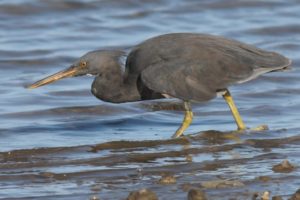
This pacific reef heron at G.J. Walter Park would interest many birdwatchers
The range of activities includes bush walking, during, ballooning, picnicking, orienteering, geocaching, horse riding, cycling, boating, canoeing kayaking, nature studies, birdwatching etc.
Formal measures of outdoor recreation demand show the number of outdoor recreation activity events by residents of the SEQ region is about 130 million per year. It is big big business, it is very important to the regions community: yet it is poorly understood by urban planners and urban designers despite being a well documented in the SEQ Outdoor Recreation Strategy and the current SEQ Regional Plan.
Which type of walking is walking?
For the purposes of discussion, consider just one outdoor recreation activity: walking. Walking takes place in many different recreation settings (or types of places). Places where people walk include;
- shopping centres
- suburban footpaths next to roads
- local concrete, bitumen and/or gravel shared paths around urban sports fields
- built tracks through bushland and mangrove forests and along shorelines
- multi-day bushwalking off-track in wild remote areas where navigation skills, camping equipment and carrying food and water are essential.
The setting for walking is clearly different in each of the examples given above. For each combination of the activity of walking and setting, different skills, rules, equipment and managerial inputs are required, and different experiences and benefits for individual participants are generated.
Toondah: simple solutions for complex problems
To date the proponents of the Toondah development have proposed simple solutions but the issue is complex. Simple solutions are doomed to fail.
Typically, decision-makers pretend to “improve”, “enhance” or “embellish” existing parklands by building more facilities – these actions change the setting. The result is usually more people at any one time in the available space with more built infrastructure which is more change from the pre-development condition.
Each combination of recreation activity and setting constitutes a different recreation opportunity. Recreation settings and recreation opportunities are widely accepted as “tools” for effective outdoor recreation planning and management. But there is no mention of this level of detail in the Toondah Harbour development scheme….neglect by omission?
Clearly, the setting is a critical attribute – change the setting and the recreation opportunity is changed. Unfortunately (and all too often), decision makers urbanise (or harden) local parks to cater for more people, but the changed setting means that existing recreational users and uses are displaced and replaced. Planners and decision makers concerned with Toondah Harbour have ignored out door recreation needs and users.
Recreation Settings
Recreation settings are the combination of the biophysical, social and managerial attributes of a place in which recreation occurs. Some recreation settings are “outdoors” and others are indoor or built places.
Biophysical attributes include the:
- geology, terrain; and soil types;
- climate (including seasonal variations) and weather;
- plant community – ground cover, shrubs, trees, etc;
- animal community – species present, numbers of each species and animal behaviour;
- smells caused by natural features (e.g. flowering plants, rain, drying algae after floods, etc.);
- sounds caused by natural features (e.g. waterfalls, surf, bird song, wind, etc.);
- amount and daily duration of natural light;
- area of available landscape/seascape in a particular site;
Social attributes include the:
- total number of people present;
- distribution of people using the site;
- activities of people use the site;
- on-site interactions between individuals and groups;
- sights, sounds, smells caused by activities of people.
Managerial attributes include:
- ownership and on-site management arrangements;
- laws and regulations operating at a site &/or applied to particular activities;
- access to and within a recreation site;
- facilities to support intended recreation uses;
- nearby and surrounding building size, colour, shape and texture;
- number and obtrusiveness of built structures (including signs – warning, direction and information);
People perceive these attributes as sights, structures, sounds and smells which influence their recreational preferences and choices. These attributes can be altered by policy, planning and management.
Recreation settings may vary in character from very natural outdoor places (i.e. places which cannot be controlled by people) at one extreme to indoor places which are entirely built and controlled. “Naturalness” can be expressed on a range from completely wild-natural to completely modified-built-developed, depending on the proportion of natural and human modified elements in the setting at any given time.

Recreation settings can range from very natural (e.g. most of Antarctica) through partly natural (e.g. a rural landscape with some remnant native vegetation left along creeks and ridges) open spaces to completely modified indoor settings (e.g. a large modern shopping centre with a closed roof, Muzak, artificial lighting, air conditioning and large crowds).
Note that this is a range of naturalness rather than quality.
The more natural settings are not inherently better for recreation than the less natural settings. However, these settings are clearly different and are not be interchangeable.
Recreation Opportunities
Recreation opportunities are specific combinations of recreation activities undertaken in settings defined by bio- physical, management and social attributes. Each combination of recreation activity and recreation setting constitutes a different recreation opportunity. Combining activities with settings to create recreation opportunities, allows for more effective and targeted management of recreation diversity. Recreation opportunities are the foundation of outdoor recreation planning and management.

A remote beach …is a different experience to that enjoyed on a Gold Coast beach. Different not better!
Participant choice, marketing strategies, management inputs, equipment requirements, skill requirements and facility designs, risk management strategies, fitness and skills requirements, client/participant expectations, etc. are all based on particular combinations of recreation activity (or activities) in one, or more, recreation settings.
Each combination of recreation activity and setting:
- Requires different skills and equipment;
- Requires a space with different attributes;
- Attracts different participants/clients with different expectations;
- Provides a different recreation experiences; and
- Requires different policy, planning and management inputs to maintain quality, safety, sustainability and diversity.
Importantly, the concept of recreation opportunity does not attempt to predict or direct how particular individuals will, or should, respond to particular combinations of recreation activity and setting. However the concept is consistent with the biophilia hypothesis which suggests that there is an instinctive bond between human beings and other living systems.
Who likes what?
Different individuals can have radically different “experiences” arising from the same combination of recreation activity and setting.
This complexity should not be used as an excuse to avoid the nuances of recreation planning and management in the manner put forward by some community leaders.
Simplistic approaches rarely deal effectively with complex interactions between particular activities, preferences, experiences and cultures.
Research does show that people recreating in open space would like to participate (in whatever activity they do) in a more natural setting than the one they are using, There is little evidence that people will choose a more developed or formal setting over a more natural setting.
If the development of the PDA proceeds as is, the current recreation setting of GJ Walter Park ( a 5.5 hectare recreation reserve) and associated Moreton Bay foreshore of sandy beach, mangroves and tidal mudflats) with views across Moreton Bay are to be lost. The views from existing buildings along Shore Street East and part of North Street – will be replaced by a view into to a large marina with high-rise commercial and residential buildings. This will markedly change the recreation setting of GJ Walter Park and the nearby residents. The change will be from a “more natural setting” to a “more urbanised setting”. A change diametrically opposed to the preferences of local and regional users!
In November 2015 the Walker Corporation said “We recognise the importance to the community of GJ Walter Park, which includes the dog off-leash area, the 104-year-old cricket field, koala habitat trees and the wonderful Norfolk pines,” and that “There will be no change to the size of the heritage park. Walker is proposing some enhancements, such as new kick about and play spaces, as well as a fully fenced dog park.”
Statements like this are being received cautiously by existing park users. All too often “enhanced park land” means users have to adapt to a much more developed recreation setting or find somewhere else that meets satisfies there setting needs. It is also unclear if the park managers are even cognisant of the number of users or the full array of uses occurring on the existing park.
Unfortunately the notions of a “fully fenced dog park” and “some enhancements” illustrate that the value of “setting” has not permeated the thinking of the State Government, Redland City Council, local politicians or the developer.
Redlands2030 – 7 July 2016
Please note: Offensive or off-topic comments will be deleted. If offended by any published comment please email thereporter@redlands2030.net
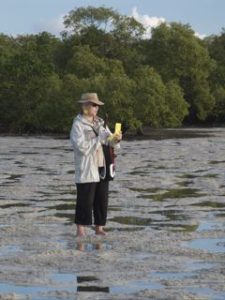
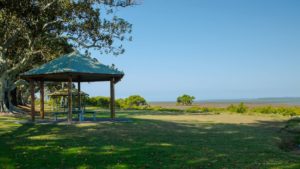

This is beautifully explained and there is little to add. Simplicity of recreational settings, and people’s direct immediate physical contact with nature – trees, grass, water – resonate deeply. ‘Forest bathing’ is well understood by the Japanese, who value the calming, soothing, regenerative effects humans experience when immersed in natural settings. In GJ Walter Park, these natural values raise our spirits; and they harmonise with the greater experience of being on the Bay, looking towards Minjerribah/North Stradbroke Island. We cannot afford to lose priceless, fragile, unmediated natural values though careless, ignorant ‘improvement’ of this park, with its significant heritage associations and wildlife habitat. Preserve the park.